Palatable Proteins for Complex Palates
As the demand for protein increases, some consumers forego conventional sources of protein while others cannot tolerate them. These alternatives may satisfy their protein needs.
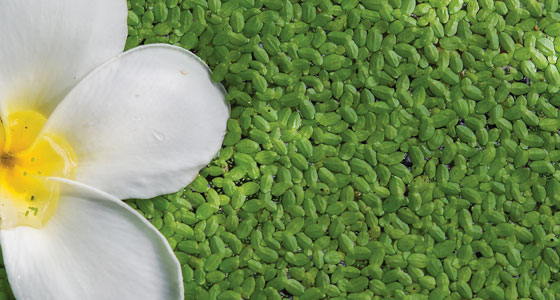
People who consume vegetarian or vegan diets and people who avoid certain foods that trigger allergic reactions comprise expanding segments of the American population: About 5% of Americans identify as vegetarian, another 2% identify as vegan, and approximately 15 million Americans have food allergies. According to the Centers for Disease Control and Prevention, the incidence of food allergies is increasing and will continue to escalate. Moreover, because of consumers’ increased awareness of the positive effects plant foods have on health as well as their concerns about environmental resources and unsustainable agricultural practices, the popularity of plant-based diets is growing. The consumption of protein sources that are not animal-derived and are free of known allergens will thus become more common, and they are projected to constitute 50% of the alternative protein market by 2054. Accordingly, algae-derived and novel plant-based proteins are viable alternatives to protein foods that vegetarians, vegans, and consumers with food allergies or dietary restrictions cannot or will not eat.
Algae-Derived Protein
When most people think of sources of protein from the sea, they immediately think of seafood. Fish and other marine animals are excellent sources of protein and other essential nutrients, but they are not the only protein-rich sources that oceans provide. Many forms of algae are also good sources of protein. Algae are a diverse group of photosynthetic organisms that are chiefly aquatic, contain chlorophyll and other pigment molecules, and generate more oxygen than all the plants in the world. Using solar energy to convert carbon dioxide into their food, they are responsible for nearly half of the photosynthesis that occurs on Earth. As a consequence, algae play a significant role in removing excess carbon dioxide from the environment. Algae are categorized in two forms: macroalgae and microalgae.
Macroalgae are seaweeds (such as kelp and dulse) and other multicellular algae that grow in oceans as well as lakes, rivers, and ponds. These organisms are visible to the naked eye and can be classified into three groups: brown algae, red algae, and green algae. Conversely, microalgae are single-cell organisms that can be seen only with the aid of a microscope—that is, until millions of them link together to form algal blooms. They can grow in a variety of places but occur mostly in fresh and marine water. Microalgae are enormously diverse, constituting tens of thousands of species, so a simple color categorization is impossible, but collectively they form the basis of the entire food chain. Both macroalgae and microalgae are nutrient-dense, possessing varying amounts of vitamins A, C, E, folate, and others; calcium, iodine, iron, and other essential minerals and trace elements; omega-3 fatty acids and other lipids; carbohydrates; and protein. In fact, the protein content of seaweeds ranges 3%–50%, and the protein content of microalgae is even higher, ranging up to 70%. These high levels of protein and other nutrients in algae have food and ingredient companies touting alga-derived protein as functional food ingredients and food products that are free of known allergens.
Super Seaweeds
Among seaweeds, red seaweeds tend to have the highest protein content, and the red seaweed species Porphyra, known as laver or nori, has the greatest: 100 grams of nori contains up to 50 grams of protein (that’s a protein content up to 50%), which means it has more protein than wheat germ or sunflower seeds. Nori has an amino acid profile similar to that of peas or beans, contains a high amount of the omega-3 fatty acid eicosapentaenoic acid (EPA), and is a good source of vitamin B12, which is rare for a food that isn’t animal-derived. Commonly used to wrap sushi rolls, dried nori is sold in sheets that can be either cut into strips to wrap rice and fish or cut into small pieces to sprinkle onto soups and noodle dishes. Nori is very popular in Asian countries, particularly Japan, so it is in abundant production there, but a few U.S. food companies produce nori products as well. Eden Foods has eight nori food products, including Nori Sea Vegetable, untoasted sheets of dried nori; Nori Krinkles, a mild and sweet snack made with toasted nori; and Nori Maki Crackers, brown-rice crackers wrapped with a strip of nori. In addition, the company Maine Coast Sea Vegetables has been developing and selling products made with nori and other seaweeds since 1971, growing the business from selling 200 pounds of seaweed a year in the United States to harvesting and selling about 100,000 pounds of seaweed annually. The company now offers eight organic North Atlantic varieties of seaweed. Its nori products include Laver/Wild Atlantic Nori and Sushi Nori Sheets in toasted and untoasted versions.
The red seaweed species Palmaria palmata, known as dulse, is another good source of protein: its protein content can be up to 25%. Dulse also contains vitamins A, B1, B2, B3, B5, B6, C, and D; minerals such as iodine, iron, magnesium and potassium; and an unusually high concentration of EPA (nearly 60% of total fatty acid content) (van Ginneken et al. 2011). In Iceland, dulse is consumed in dried form as a snack and added to salads, bread dough, and curds. In Nova Scotia, Canada, dulse is used to make sea parsley, which is sprinkled on dishes as a substitute for salt and to add a salty sea flavor. In Wales, dulse is used to make laverbread, a purée served with toast, bacon, and shellfish or rolled in oatmeal and fried in bacon fat. And fine cuisine featuring red seaweed is gracing the menus at Michelin-starred restaurants in Scotland and Ireland.
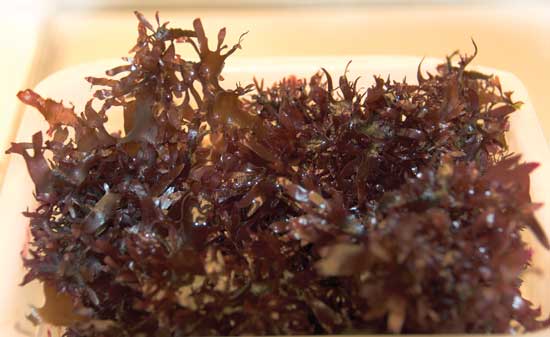 Research and innovation by Oregon State University and Teagasc, an agriculture and food development authority in Ireland, is allowing more products made with dulse to be developed and commercially marketed. Last year, a patented strain of dulse growing at Oregon State University made national headlines because of its ability to mimic the flavor of bacon when it’s deep-fried. Staff at the university’s Food Innovation Center used that dulse to develop several products, and through a partnership with New Seasons Market, one of them made its commercial debut in January 2016: New Seasons Market Tamari with Dulse Seaweed Dressing & Marinade, which is available only at New Seasons Markets in Portland, Ore., and Vancouver, Wash.
Research and innovation by Oregon State University and Teagasc, an agriculture and food development authority in Ireland, is allowing more products made with dulse to be developed and commercially marketed. Last year, a patented strain of dulse growing at Oregon State University made national headlines because of its ability to mimic the flavor of bacon when it’s deep-fried. Staff at the university’s Food Innovation Center used that dulse to develop several products, and through a partnership with New Seasons Market, one of them made its commercial debut in January 2016: New Seasons Market Tamari with Dulse Seaweed Dressing & Marinade, which is available only at New Seasons Markets in Portland, Ore., and Vancouver, Wash.
More than 4,000 miles away, Teagasc has a number of projects underway to boost the growth and harvest of both dulse and laver along Ireland’s coasts and use them to develop food products with beneficial health effects. Maria Hayes, scientific research officer, Teagasc Food Research Centre, says that the proteins in Palmaria and Porphyra seaweeds may be as effective as medications in reducing high blood pressure and the risk of stroke and heart attack but without side effects (Fitzgerald et al. 2014). Hayes highlights other benefits of red seaweeds: “[Palmaria palmata] protein hydrolysates generated using corolase and alcalase enzymes have potential for use as functional food ingredients for prevention of diabetes and obesity,” Hayes says. The protein content of dulse, nori, and other red seaweeds “is often higher than that found in species from green and brown seaweeds. The usefulness of the seaweed protein depends on the amino acid profile of the protein, and this is not known for all seaweed species to date,” Hayes points out. Teagasc’s initial product development is focused on adding seaweed to traditional Irish breads.
--- PAGE BREAK ---
Tiny Algae Have Huge Capacity
The concept of using microalgae as human food is fairly new—at least to Westerners, but Asian cultures have been using microalgae as a source of food for hundreds of years. There are hundreds of thousands of microalgae species (most of which are still unidentified and unexplored), and for some time, microalgae had been associated primarily with certain roles and uses. They constitute the base of the oceanic food chain, serving as food for smaller aquatic organisms that are subsequently eaten by larger organisms (this is why large predator fish have DHA and EPA), and because microalgae are rich sources of DHA and EPA as well as vitamins, minerals, and antioxidants, some are also used as nutritional supplements. It is partly through microalgae’s use as nutritional supplements that some companies have begun to use them as food and food ingredients.
At this time, the microalgae that have generated the most buzz in food and human nutrition are Dunaliella, Chlorella, and Arthrospira (technically, a type of cyanobacteria). Dunaliella are saltwater green microalgae with a protein content of up to 57% when dried. One of the richest source of beta-carotene on the planet, Dunaliella microalgae are predominantly sold as a powder that can be mixed into beverages. Chlorella are freshwater green microalgae that can have a protein content of up to 60% when dried. They are most frequently made into tablets that can be taken orally or powders and extracts that can be added to various foods such as sauces, smoothies, soups, and beverages. And Arthrospira (also known as Spirulina) are blue-green algae that grow naturally in salty lakes and ponds; their protein content can be up to 70% when dried. Spirulina microalgae are typically made into capsules, tablets, powders, and liquid extracts, and they have been used as food ingredients in a small number of food products.
Human food and food ingredients made with microalgae are few and far between, so there is plenty of room for new product ideas. South Korean food company Paldo, Seoul, South Korea, has two food products made with Chlorella: Chlorella Cup Noodles and Green Tea Chlorella Noodles. A Malaysian manufacturer, Everprosper Food Industries Sdn Bhd, makes Vitame Organic Spirulina Noodles, and MicrOLife, a company based in Italy, produces Spirulina pastas and protein bars under the brand name MicrOLife Nutrition. And Daily Greens LLC, Austin, Texas, makes the organic cold-pressed Daily Greens Hemp Milk, which contains another type of blue-green algae, Aphanizomenon flos-aquae. Hence, the development of microalgae foods and food ingredients is still in early stages. A possible reason for the scarcity of microalgae-based foods is that incorporating microalgal proteins into palatable foods on a large scale is proving to be a challenge: food products containing microalgal protein can have a fishy flavor or aftertaste as well as a green hue. In addition, microalgae grown in open-pond systems are susceptible to contamination, and an alternative means of growing microalgae, using photobioreactors, is cost prohibitive (Lane 2015). However, one company seems to have overcome these issues with a type of microalgae that not only is easy to grow but also has a pleasant taste.
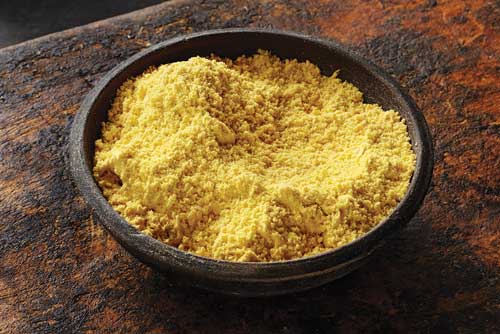 Solazyme, South San Francisco, Calif., is an American biotechnology company that originally made a name for itself by using microalgae to produce high-performance biofuels, providing alternatives to petroleum-based fuels. Having realized that the production of biofuels was only part of microalgae’s potential, the company expanded its mission and began using microalgae for industrial applications, personal care products, and food products. “We’ve been studying algae for over a decade, and after screening over 100,000 microalgae strains, we found the algae that was ideal for the kind of food ingredients we wanted to make,” says Mark Brooks, senior vice president, Solazyme Food Ingredients. For its line of food products, Solazyme uses a natural strain of Chlorella originally from freshwater sources in the Netherlands that it grows in closed stainless-steel fermentation tanks. After processing its Chlorella, the company has a soft, fine microalgae powder that yields two products: AlgaVia Whole Algae Flour, a lipid powder that can serve as a replacement for dairy fats, oils, and egg yolks; and AlgaVia Whole Algae Protein, a protein powder that also contains fiber, monounsaturated fats, and micronutrients. Both products are marketed as vegan whole-food ingredients that are gluten-free, free of known allergens, not genetically engineered, and sustainable. Moreover, AlgaVia Whole Algae Protein is said to possess all essential amino acids and a protein content of 63%. “This is a unique combination of a protein that has a complete amino acid profile, is highly digestible (88%), and doesn’t interact with other ingredients or precipitate in a formulation. It delivers vegan protein along with a rich collection of dietary fiber, healthy lipids, and micronutrients such as lutein and zeaxanthin,” Brooks says. The company is also promoting a new line of algae oils.
Solazyme, South San Francisco, Calif., is an American biotechnology company that originally made a name for itself by using microalgae to produce high-performance biofuels, providing alternatives to petroleum-based fuels. Having realized that the production of biofuels was only part of microalgae’s potential, the company expanded its mission and began using microalgae for industrial applications, personal care products, and food products. “We’ve been studying algae for over a decade, and after screening over 100,000 microalgae strains, we found the algae that was ideal for the kind of food ingredients we wanted to make,” says Mark Brooks, senior vice president, Solazyme Food Ingredients. For its line of food products, Solazyme uses a natural strain of Chlorella originally from freshwater sources in the Netherlands that it grows in closed stainless-steel fermentation tanks. After processing its Chlorella, the company has a soft, fine microalgae powder that yields two products: AlgaVia Whole Algae Flour, a lipid powder that can serve as a replacement for dairy fats, oils, and egg yolks; and AlgaVia Whole Algae Protein, a protein powder that also contains fiber, monounsaturated fats, and micronutrients. Both products are marketed as vegan whole-food ingredients that are gluten-free, free of known allergens, not genetically engineered, and sustainable. Moreover, AlgaVia Whole Algae Protein is said to possess all essential amino acids and a protein content of 63%. “This is a unique combination of a protein that has a complete amino acid profile, is highly digestible (88%), and doesn’t interact with other ingredients or precipitate in a formulation. It delivers vegan protein along with a rich collection of dietary fiber, healthy lipids, and micronutrients such as lutein and zeaxanthin,” Brooks says. The company is also promoting a new line of algae oils.
Plant-Based Protein
When it comes to the greening of protein, algae-derived proteins are gaining ground, but they have a long way to go to reach the use, consumption, and applications of plant-based proteins. As industry insiders declare plant proteins the biggest trend for 2016, a class of novel plant foods is propelling its way into the category: Floating freely on the surface of marshes, ponds, and lakes, duckweeds may resemble algal blooms, but they are not microalgae. Instead, duckweeds are the smallest flowering plants in the world. They do not have stems or leaves; rather, they have round or slightly oval-shaped bodies and small root-like structures. Like algae, duckweeds grow rapidly, especially in still or slow-moving waters with high levels of nitrogen and phosphorus; photosynthesize, making them beneficial to the environment; and are sources of vitamins, minerals, trace elements, and protein. In fact, duckweeds have protein contents of up to 45% of dry mass, which is among the highest protein levels in the plant kingdom. Although they are usually perceived as food sources for birds and fish, people in Laos, Thailand, Vietnam, and parts of Africa have been eating various duckweeds for centuries. Now, two types of duckweed are the basis for two products being promoted as excellent plant-based sources of protein for humans.
Lentein Plus, developed by Parabel, Melbourne, Fla., is a protein concentrate that is derived from water lentils, members of the duckweed family. It is a fine, free-flowing green powder that can be added to chips, crackers, bars, and cereal clusters. It can also be blended into sports drinks or meal-replacement shakes. “Lentein Plus contains 65% protein. The protein is made in a cold water extraction process and [therefore] retains all the nutrients intact,” says Cecilia Wittbjer, Parabel’s vice-president of marketing. Because Lentein Plus is produced from water lentils grown hydroponically, the product is sustainable. It is also marketed as free of any of the allergens associated with soy, nuts, and dairy. “There will be other ingredients launched this year and next. We hope to have a product portfolio that can be used in most formulations where you would like to have a non-GMO, free-of-major-allergens option,” Wittbjer says. (Parabel won an IFT Food Expo Innovation Award in 2015 for its Lentein products.)
Another duckweed product on the market is Mankai, a whole-food ingredient produced by Hinoman Ltd., Tel Aviv, Israel. It is available fresh or as a dry whole-food powder and can be used in bakery products, health bars, pasta, shakes, and smoothies or sprinkled on salads. For now, the company is focused on positioning Mankai, which has a protein content of 45%, as a whole food or whole-food ingredient rather than as a protein concentrate or isolate. As with Parabel’s Lentein Plus, Mankai is marketed as a sustainable product and is free of nut and soy allergens, gluten, and genetically engineered ingredients.
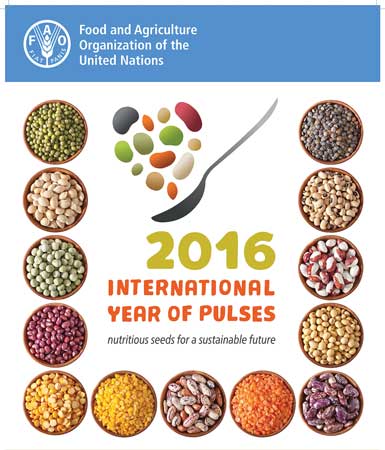 Protein with a Pulse
Protein with a Pulse
A legume is a plant whose edible seeds are enclosed in a pod; a pulse is part of the legume family, but the term refers to only the dried seed. Therefore, all pulses—dried beans, chickpeas, lentils, lupins, and so on—are legumes, but not all legumes—peanuts, green peas, green beans, edamame, and the like—are pulses. And even though legumes are often referred to as vegetables, from a botanical perspective, they are fruits because a fruit is a structure that bears the seeds of a plant. Consequently, this also means that peanuts, peas, and pulses, are seeds. Regardless of which plant food category used to describe them, legumes are very nutritious foods. They are rich sources of fiber, vitamins (especially folate and other B vitamins), calcium and other minerals, polyphenols and other beneficial phytochemicals, and high quality protein. Legumes have protein contents that range 20%–40%, they are gluten-free, and most are free of allergens (peanuts and soybeans are the exceptions). In addition, legumes have been shown to decrease the risk of certain cancers, cardiovascular disease, and diabetes.
Despite their excellent nutrition profile and positive effects on health, the global consumption of legumes is on the decline and is mostly believed to be the result of the increased consumption of meat worldwide (FAO 2015). However, for vegetarians, vegans, and food manufacturers, the use and consumption of legumes remains significant. Moreover, as more consumers embrace plant-based meals, the demand for high-protein vegetarian and vegan products will continue to grow. In fact, a recent survey by Global Food Forums Inc. indicates that 88% of research-and-development food professionals predict an increase in products made with pea protein, and 74% predict an increase in products made with other legumes (GFF 2015). In addition, the market for pea protein is expected to grow to $34.8 million by 2020 (MarketsandMarkets 2015). This optimistic outlook for legumes is evident by several products already on the market.
--- PAGE BREAK ---
Because certain legumes can be processed into flours, flakes, starches, pastes, and protein concentrates, they are widely used to enrich the protein content of many food products. The Scoular Co., Omaha, Neb., uses Canadian yellow peas to produce Propulse, a pea protein isolate that can be used in baked goods, beverages, dressings, nutrition bars, pasta, sauces, and snack foods. Scoular has also developed pea crisps, which can be used in energy bars. Canadian yellow peas are also the ingredient in the pea protein product PeasiPro by AIDP, City of Industry, Calif. And Archer Daniels Midland Co., Chicago, Ill., recently announced its intent to explore the possibility of offering pea protein isolates and concentrates to meet the rising demand for functional protein from alternative sources.
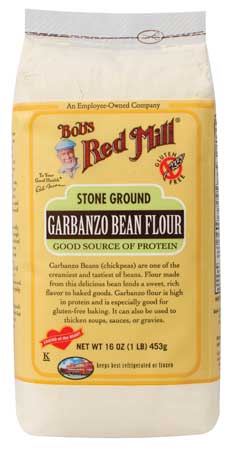
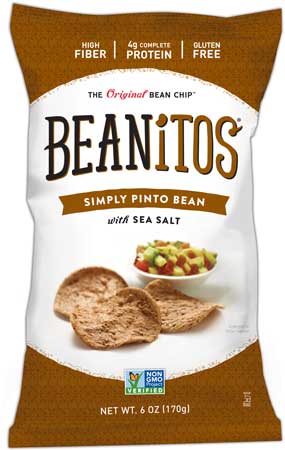 Bob’s Red Mill, Milwaukie, Ore., uses black beans, fava beans, garbanzo beans, and white beans to make various flours. The flours, including Bob’s Red Mill Black Bean Flour and Bob’s Red Mill Garbanzo Bean Flour, are marketed as ideal for thickening soups and sauces, augmenting the flavor of dips and taco/burrito fillings, and replacing a portion of the wheat flour in certain baked goods. The company also produces a line of vegan, gluten-free, and soy-free Nutritional Booster Protein Powders that are made with pea protein and contain 20 grams of protein per serving. Explore Asian uses beans to make a variety of pastas, such as its Organic Black Bean Spaghetti and Organic Adzuki Bean Spaghetti. Made from just organic beans and water, Explore Asian’s bean pastas are marketed as high protein, vegan, and gluten-free. And Beanitos Inc., Austin, Texas, offers several snack products made with white beans, black beans, and pinto beans. The snacks include Beanitos Hint of Lime Navy Bean with Sea Salt and Beanitos Better Cheddar Pinto Bean Chips.
Bob’s Red Mill, Milwaukie, Ore., uses black beans, fava beans, garbanzo beans, and white beans to make various flours. The flours, including Bob’s Red Mill Black Bean Flour and Bob’s Red Mill Garbanzo Bean Flour, are marketed as ideal for thickening soups and sauces, augmenting the flavor of dips and taco/burrito fillings, and replacing a portion of the wheat flour in certain baked goods. The company also produces a line of vegan, gluten-free, and soy-free Nutritional Booster Protein Powders that are made with pea protein and contain 20 grams of protein per serving. Explore Asian uses beans to make a variety of pastas, such as its Organic Black Bean Spaghetti and Organic Adzuki Bean Spaghetti. Made from just organic beans and water, Explore Asian’s bean pastas are marketed as high protein, vegan, and gluten-free. And Beanitos Inc., Austin, Texas, offers several snack products made with white beans, black beans, and pinto beans. The snacks include Beanitos Hint of Lime Navy Bean with Sea Salt and Beanitos Better Cheddar Pinto Bean Chips.
Grainy, Seedy Protein
Most legumes and other plant-based protein foods are not complete proteins, which means they are lacking in one or more essential amino acids—essential because, of the 20 amino acids that make up protein, nine of them cannot be produced by the human body. Pairing certain plant-based protein foods with others can provide the amino acid(s) each food is missing; such pairings are called protein complementation. For beans, peas, lentils, and other legumes, nuts are complementary and are common ingredients in many food products offered as sources of protein for vegetarians and vegans. However, tree nuts are one of three food allergens most frequently associated with anaphylaxis (peanuts and shellfish are the other two). For plant eaters with tree-nut and/or peanut allergies, grains and seeds are protein options that are complementary to legumes and vegetable proteins. Among grains, the ones with the highest protein contents are amaranth, wild rice, millet, buckwheat, and quinoa. And among seeds, hemp, pumpkin, flax, and sunflower have the highest levels of protein.
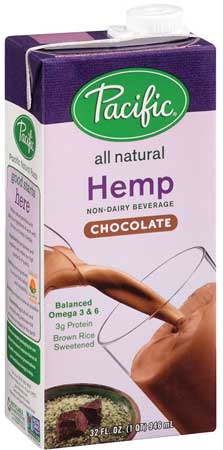 One grain-based product that is becoming a popular source of protein for vegans and vegetarians is seitan. A meat substitute made from the gluten of wheat or spelt, seitan can mimic the taste of steak, chicken, pork, or sausage and contains 20 grams of protein per three-ounce portion. Upton’s Naturals, Chicago, Ill., offers several types of seitan, including Chick Seitan and Bacon Seitan, while Sweet Earth Natural Foods offers spicy versions of seitan, including Chipotle Style Seitan and Curry Recipe Seitan. Also rising in popularity among vegans and vegetarians are hemp seeds. Hemp seeds have 10 grams of protein per two-tablespoon serving along with vitamins, minerals, and omega-3 fatty acids. They can be eaten raw, ground into meal and baked into cereals and baked goods or added to shakes and smoothies, or used to make milks and butters. Manna Organics, Lisle, Ill., makes Banana Walnut Hemp Manna Bread, and Pacific Foods of Oregon, Tualatin, Ore., offers hemp milks in different flavors: Hemp Non-Dairy Beverage Original, Hemp Non-Dairy Beverage Chocolate, and Hemp Non-Dairy Beverage Vanilla.
One grain-based product that is becoming a popular source of protein for vegans and vegetarians is seitan. A meat substitute made from the gluten of wheat or spelt, seitan can mimic the taste of steak, chicken, pork, or sausage and contains 20 grams of protein per three-ounce portion. Upton’s Naturals, Chicago, Ill., offers several types of seitan, including Chick Seitan and Bacon Seitan, while Sweet Earth Natural Foods offers spicy versions of seitan, including Chipotle Style Seitan and Curry Recipe Seitan. Also rising in popularity among vegans and vegetarians are hemp seeds. Hemp seeds have 10 grams of protein per two-tablespoon serving along with vitamins, minerals, and omega-3 fatty acids. They can be eaten raw, ground into meal and baked into cereals and baked goods or added to shakes and smoothies, or used to make milks and butters. Manna Organics, Lisle, Ill., makes Banana Walnut Hemp Manna Bread, and Pacific Foods of Oregon, Tualatin, Ore., offers hemp milks in different flavors: Hemp Non-Dairy Beverage Original, Hemp Non-Dairy Beverage Chocolate, and Hemp Non-Dairy Beverage Vanilla.
Protein is one of three macronutrients that humans need to survive, but certain proteins cause food allergies, and the production of others (i.e., animal-derived proteins) takes a toll on the environment, depleting land, water, and energy resources. For these reasons, every day more people are motivated to consume less meat and animal products or none at all. As vegan, vegetarian, and other plant-based diets continue to rise in popularity, so do other food preferences and the occurrence of food allergies. For such people, getting enough protein can be a problem. Seaweed, microalgae, duckweed, legumes, whole grains, and seeds may be the solution.
Guilt-Free Animal Protein
Every year many consumers decide to try eating only vegetarian or vegan meals for various reasons. The most common reasons are to manage weight or health issues, to protest the treatment and/or consumption of food animals, or to address concerns about agriculture and environmental resources. However, according to one survey, 84% of vegetarians and vegans eventually revert to eating meat (Humane Research Council 2014). Of those who revert, a sizeable amount feel guilty about it. Here are a few animal-based proteins that former vegetarians and vegans can feel good about eating.
• Eggs. Eggs are a compact, highly nutritious form of animal protein that doesn’t involve the butchering of animals and is environmentally friendly. Eggs contain all B vitamins and the full range of amino acids that make up a complete protein; a large egg has seven grams of protein. Moreover, eggs are a good natural source of certain micronutrients that are missing from many foods, such as iodine, choline, and vitamin D. They also contain the antioxidants lutein and zeaxanthin, which help prevent macular degeneration. However, despite all the nutrient benefits contained in eggs, they often are criticized by consumers who strongly object to the raising of chickens in cage systems. Former vegetarians and vegans can feel good about the fact that many eggs are now produced in cage-free or free-range environments. In addition, some food manufacturers—Mondelez International, ConAgra Foods, Kellogg Co., General Mills, Nestlé—have committed to using only cage-free eggs in their products within five to 10 years.
• Insects. There are more than 1,900 edible insects on Earth, and about two billion people around the world eat them. Insects contain protein, fiber, vitamins, and minerals; however, overall nutrient values for edible insects are highly variable because nutrient levels differ between species and within species due to variations in size, habitat, and diet. What is clear is that raising edible insects requires far less land than raising cattle, chickens, and pigs. In addition, they require six times less feed than cattle and two times less feed than pigs and chickens to produce the same amount of protein, and they produce fewer greenhouse gases. Despite the benefits and advantages of edible insects, most consumers in Westernized countries are resistant to consuming them. However, consumers who plan to reduce their intake of meat are 4.5 times more likely to eat insects (Verbeke 2014). Thus, vegetarians and vegans who are no longer satiated by plant foods alone would be prime candidates for a small but growing market of foods made with bugs: These include dishes at restaurants such as The Black Ant in New York, N.Y., which offers grasshopper-crusted shrimp and entrees sprinkled with black ant salt, and Oyamel in Washington, D.C., which serves sautéed grasshoppers in corn tortillas; insect flours and protein powders by All Things Bugs and Cricket Flours LLC; and bars and baked goods by Exo Inc. and LaViewEye.
• Cultured meat. Cultured meat would reduce the amount of land, energy, and water used to produce beef, which would appeal to former vegetarians and vegans who are wary of meat consumption for environmental reasons. Physician Mark Post, a professor at Maastricht University who specializes in vascular biology and engineering skeletal muscle tissue, unveiled the first hamburger made with beef grown in vitro in August 2013. He and a team of scientists created the cultured beef by removing stem cells from a living cow’s skeletal muscle tissue and growing the cells into muscle tissue in an artificial environment. More recently, Memphis Meats revealed the first meatball made with lab-grown beef cells and plans to make cultured pork and chicken. The company has no products on the market yet, but with investments from venture capitalists, it projects to have cultured meat products on the market within five years.
Toni Tarver is senior writer/editor of Food Technology magazine ([email protected]).
References
FAO. 2015. “Five Things We Learned from the Launch of the International Year of Pulses.” http://www.fao.org/pulses-2016/news/news-detail/en/c/345401/.
Fitzgerald, C. et al. 2014. “Potential of a Renin Inhibitory Peptide from the Red Seaweed Palmaria palmata as a Functional Food Ingredient Following Confirmation and Characterization of a Hypotensive Effect in Spontaneously Hypertensive Rats.” J. Agr. Food Chem. 62: 8352–8356.
GFF. 2015. “Protein-Savvy Food Formulators See Sharply Increased Use of Diverse Protein Types.” Press release, Nov. 30. Global Foods Forums, St. Charles, Ill. globalfoodforums.com.
Humane Research Council. 2014. “Study of Current and Former Vegetarians and Vegans.” https://faunalytics.org/feature-article/study-of-current-and-former-vegetarians-and-vegans/.
Lane, J. 2015. “The Great Algae Robbery.” Biofuels Digest, Feb. 27.
MarketsandMarkets. 2015. “Pea Protein Market Worth 34.8 Million USD by 2020.” Press release, Nov. 3. MarketsandMarkets, Vancouver, Wash. marketsandmarkets.com.
van Ginneken, V.J.T. et al. 2011. “Polyunsaturated Fatty Aids in Various Macroalgal Species from North Atlantic and Tropical Seas.” Lipids Health Dis. 10: 104. doi: 10.1186/1476-511x-10-104.
Verbeke, W. 2015. “Profiling Consumers Who Are Ready to Adopt Insects as a Meat Substitute in a Western Society.” Food Qual. Prefer. 39: 147–155.
